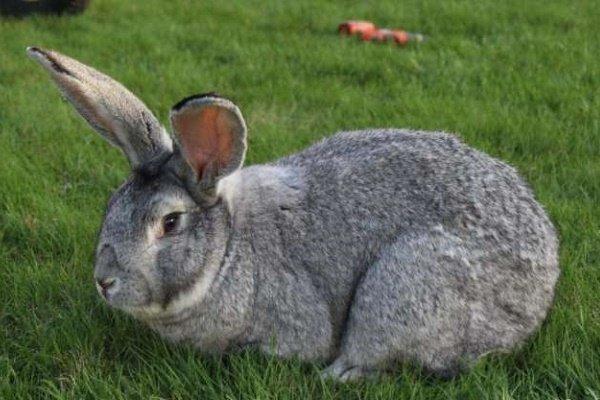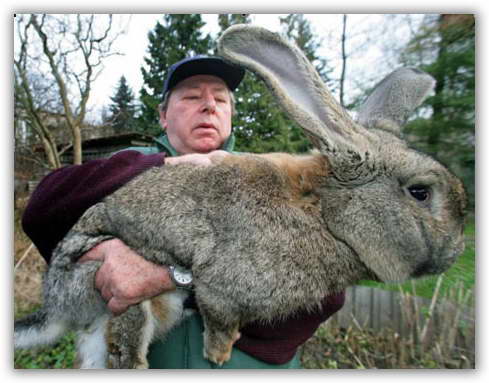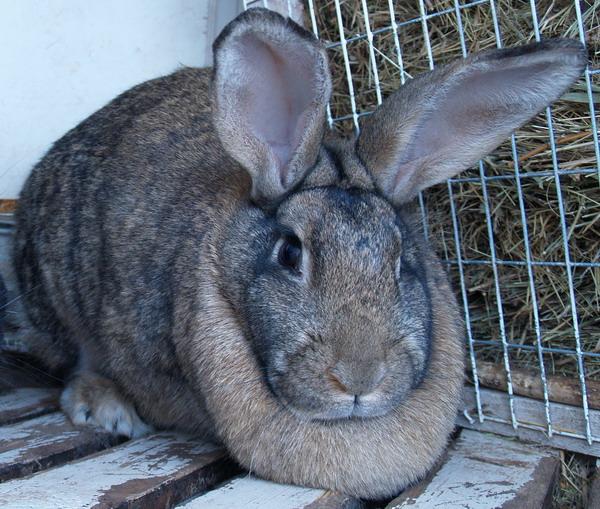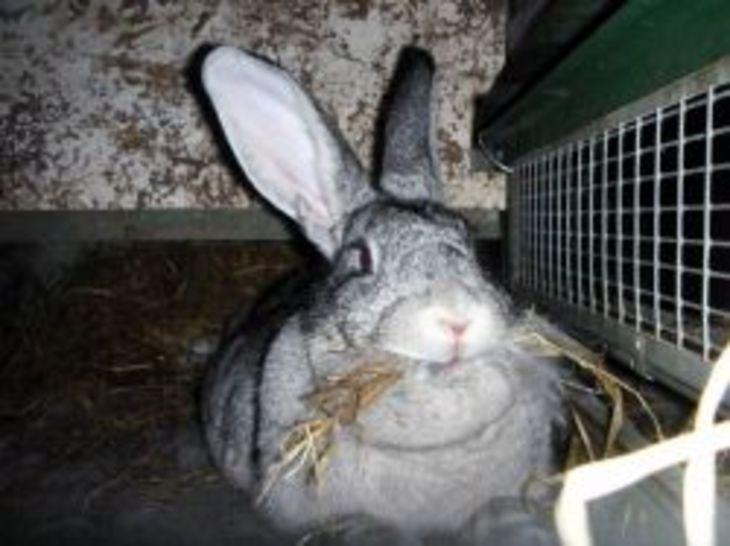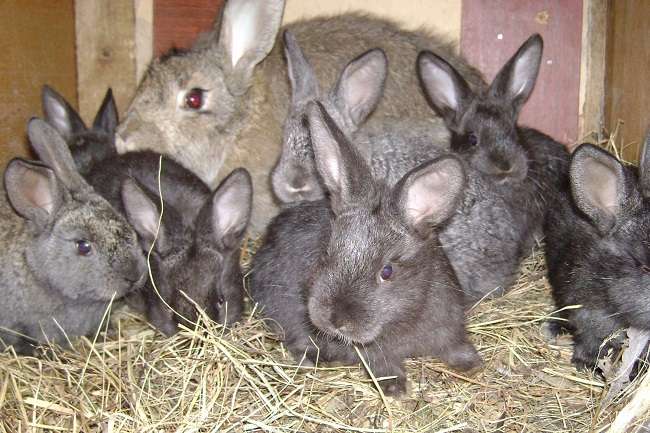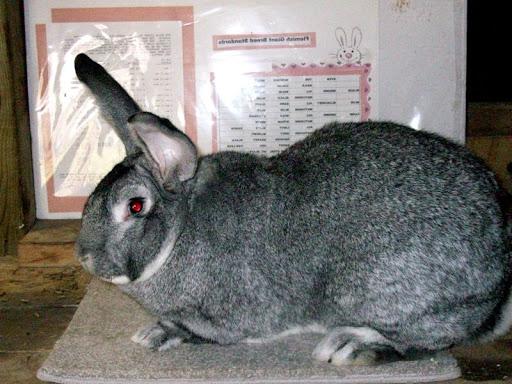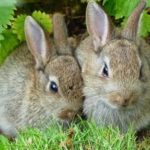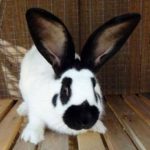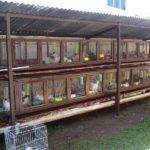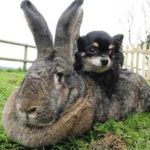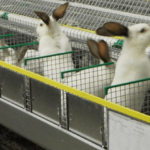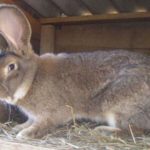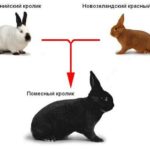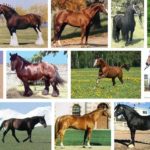Massive rabbits of the gray giant breed are bred for meat and skin, they weigh 5-7 kilograms, are resistant to disease and are highly productive. These qualities determined the popularity of the breed and its prevalence in the countries of the former USSR, in the southern regions of Russia, in Ukraine and Moldova. Selection work is underway to improve the quality of the coat of these rabbits.
Origin of the gray giant breed
This breed was developed in the post-war years near Poltava by crossing local rabbits without a specific breed with albinos Flanders. Subsequently, careful selection was carried out in order to select individuals that fit the breed standard.
The selection work was completed by 1952, which is considered to be the date of the “birth” of gray giants.
Description and characteristics of the rabbit
Features of gray giant rabbits:
- Massiveness.
- Powerful physique.
- Strong, durable bones.
- Oval body with rounded back.
- Large, fleshy ears, wider in the middle than at the base and ends, set apart in a "V" shape when viewed from the front.
- The head is large, elongated, of rough constitution.
- The limbs are strong and strong.
- Accelerated weight gain. On average, a rabbit weighs 5-6 kg; adult record-breaking males reach 7 kg.
These are energetic and cheerful, active animals, hardy, fast-growing, fertile, and disease-resistant. If well fed, gray giant rabbits can be used for broiler breeding for meat.
The skin of the gray giant is not too thick, with soft, low fur and dense, elastic, thin flesh. The following colors are available:
- Agouti is the most common, gray-hare, with white legs and belly.
- Kangaroo, or dark gray with a brown tint - with a lighter underside of the tail of a smoky shade.
- Iron gray – dark with uniform gray hair.
- Golden is a rare color, the result of a mutation.
- Black Rabbit.
- White color.
The last two colors, like the golden variation, are rare.
What are its advantages and disadvantages?
The undoubted advantages of the gray giant include the following properties:
- Unpretentiousness.These animals are not capricious, rarely get sick, grow and reproduce well, and do not require increased attention from their owners.
- Precocity. Thanks to this property, animals can be raised to produce tender meat using the broiler method.
- Large body weight. Rabbits weigh up to 5-6 kg, which is an excellent indicator, especially considering the rate of weight gain.
- Productivity. The female, on average, brings 7-8 rabbits per litter.
Gray giants have no obvious shortcomings. These include the gluttony of animals, but this quality helps them quickly gain weight. Their skin does not reach the standards of such “stars” as the Soviet chinchilla or white giant, butterfly or Vienna blue, but it is quite suitable for the production of inexpensive fur products.
Keeping and caring for a rabbit
Gray giants are kept in cages located on the sunny side, but with protection from direct exposure to ultraviolet rays. An important condition for all rabbits is hygiene, the presence of clean water and the absence of drafts and dampness.
These rabbits are unpretentious and do not need special conditions; it is important to feed them well, as the animals have an excellent appetite.
Despite the fact that the breed is considered resistant to disease, cages are regularly disinfected to prevent widespread infections. Most often, bleach is used for these purposes, but firing with a blowtorch will also work.
Diet
Gray giant rabbits are not picky about food; they happily eat fresh grass in the warm season and hay in winter, they eat fresh and boiled root vegetables, herbs, and tree branches. To accelerate weight gain, it is necessary to add grains and protein mixtures before finishing fattening.
If animals have an excellent appetite, you should not overfeed them, as this can negatively affect their digestion and general health. To ensure that rabbits get enough calories to successfully gain weight, they need to be fed frequently, but not in excess. It is very important to follow a feeding schedule - animals quickly get used to it.
After the animals eat, all food remains must be removed, because decaying leftovers can cause infection and illness in the livestock. It is equally necessary to monitor the cleanliness and freshness of the water in the drinking bowls.
Nuances of breeding
Gray giant rabbits can give birth to up to 8 cubs, but the litter can contain up to 14 rabbits. At the same time, females are distinguished by their milk production, they are devoted mothers, take care of their offspring, do not trample or eat rabbits, and warm them in a well-equipped nest.
With good nutrition, animals quickly gain weight, their meat is of high quality, tender, and dietary. But there are certain features when growing this breed:
- In recent years, the breed has become considered obsolete, since now there are rabbits that are capable of gaining several kilograms more weight in the same time and with smaller amounts of feed.
- Massive animals need stronger cages.
- The skin of gray giants is not of brilliant quality, it is uninteresting in color and has an uneven distribution of pile density.
In modern conditions, these rabbits are more suitable for raising in private and farm households, as they are a universal breed that produces both skin and tasty dietary meat.It is also important that they are unpretentious in food, they will gladly eat any vegetables and herbs from their garden, the main thing is that they are clean and not wet, and also that grass or hay is on the menu every day.
What are they sick with?
Rabbits of this breed are considered resistant to diseases. They were bred specifically so that breeders would have a minimum number of problems during mass breeding. They are suitable for living indoors, but when kept in cages with metal mesh floors they can develop pododermatitis.
This disease is an inflammation of the fingertips, the folds between them, sometimes involving the claw ridges in the process. Rabbits have gray giant pododermatitis may be provoked due to skin damage caused by contact with metal. They are characterized by slightly pubescent paws and significant weight.
This breed was bred for the southern regions, where the climate is mild or temperate, without sudden temperature changes. Based on this, rabbits in harsh weather conditions can only be kept in insulated rooms, protected from frost, drafts and high humidity.
Where to buy, approximate cost?
Animals for breeding must be purchased from trusted producers. It is better to do this in professional rabbit breeding farms, such as the Petrovsky fur farms in Ukraine, in the Poltava region, Krasnaya Polyana in the Kirovograd region, Luch in Tatarstan, Crimea, and so on.
The cost of rabbits starts from 250 rubles per head. On average, the manufacturer asks for 400-600 rubles. Gray giants are profitable rabbits to breed, suitable for cultivation for both meat and skin, are healthy, gain weight in 2-3 months, therefore they are used both in private household plots and for industrial cultivation.

